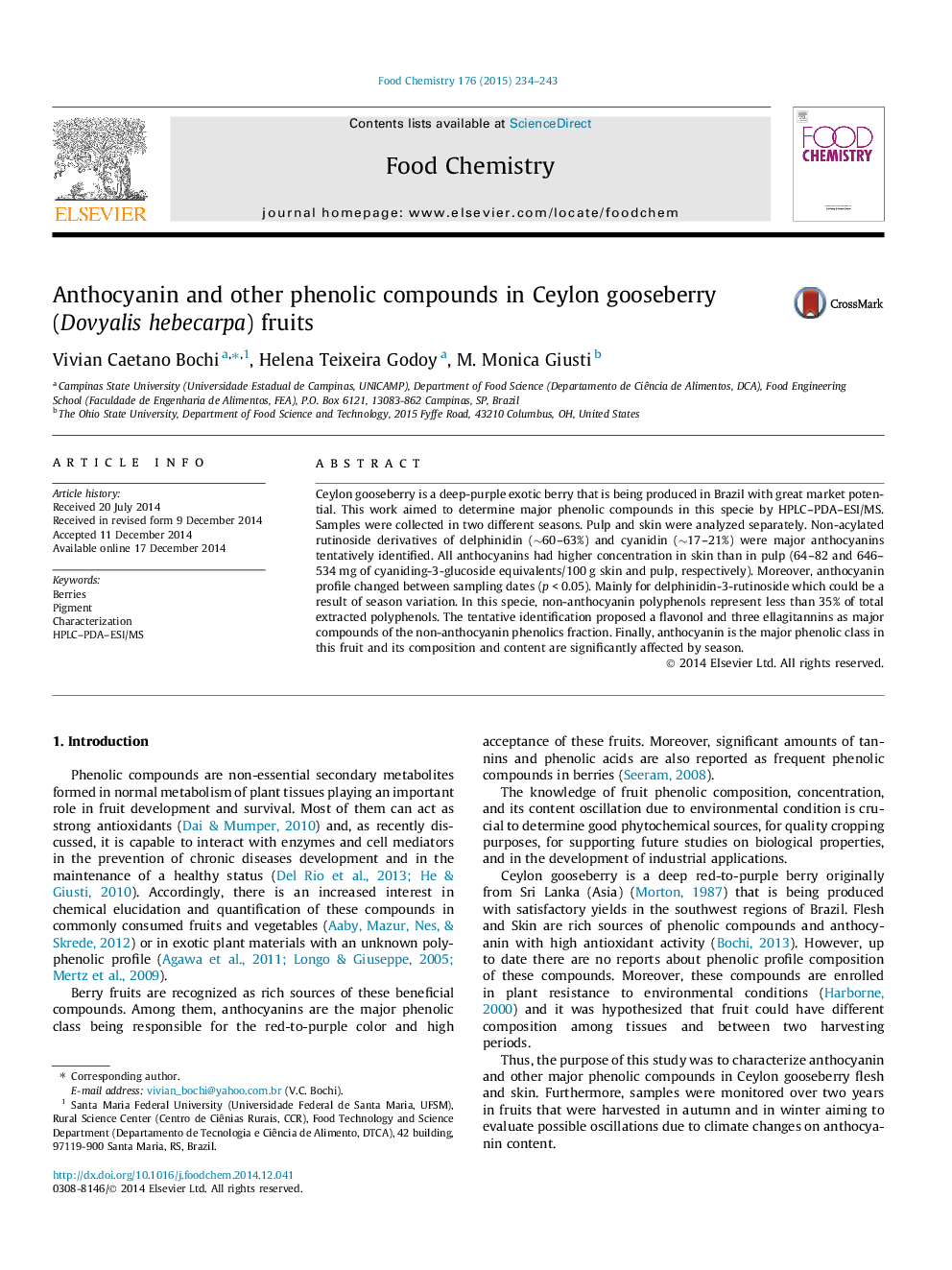| Article ID | Journal | Published Year | Pages | File Type |
|---|---|---|---|---|
| 7592980 | Food Chemistry | 2015 | 10 Pages |
Abstract
Ceylon gooseberry is a deep-purple exotic berry that is being produced in Brazil with great market potential. This work aimed to determine major phenolic compounds in this specie by HPLC-PDA-ESI/MS. Samples were collected in two different seasons. Pulp and skin were analyzed separately. Non-acylated rutinoside derivatives of delphinidin (â¼60-63%) and cyanidin (â¼17-21%) were major anthocyanins tentatively identified. All anthocyanins had higher concentration in skin than in pulp (64-82 and 646-534 mg of cyaniding-3-glucoside equivalents/100 g skin and pulp, respectively). Moreover, anthocyanin profile changed between sampling dates (p < 0.05). Mainly for delphinidin-3-rutinoside which could be a result of season variation. In this specie, non-anthocyanin polyphenols represent less than 35% of total extracted polyphenols. The tentative identification proposed a flavonol and three ellagitannins as major compounds of the non-anthocyanin phenolics fraction. Finally, anthocyanin is the major phenolic class in this fruit and its composition and content are significantly affected by season.
Keywords
Related Topics
Physical Sciences and Engineering
Chemistry
Analytical Chemistry
Authors
Vivian Caetano Bochi, Helena Teixeira Godoy, M. Monica Giusti,
